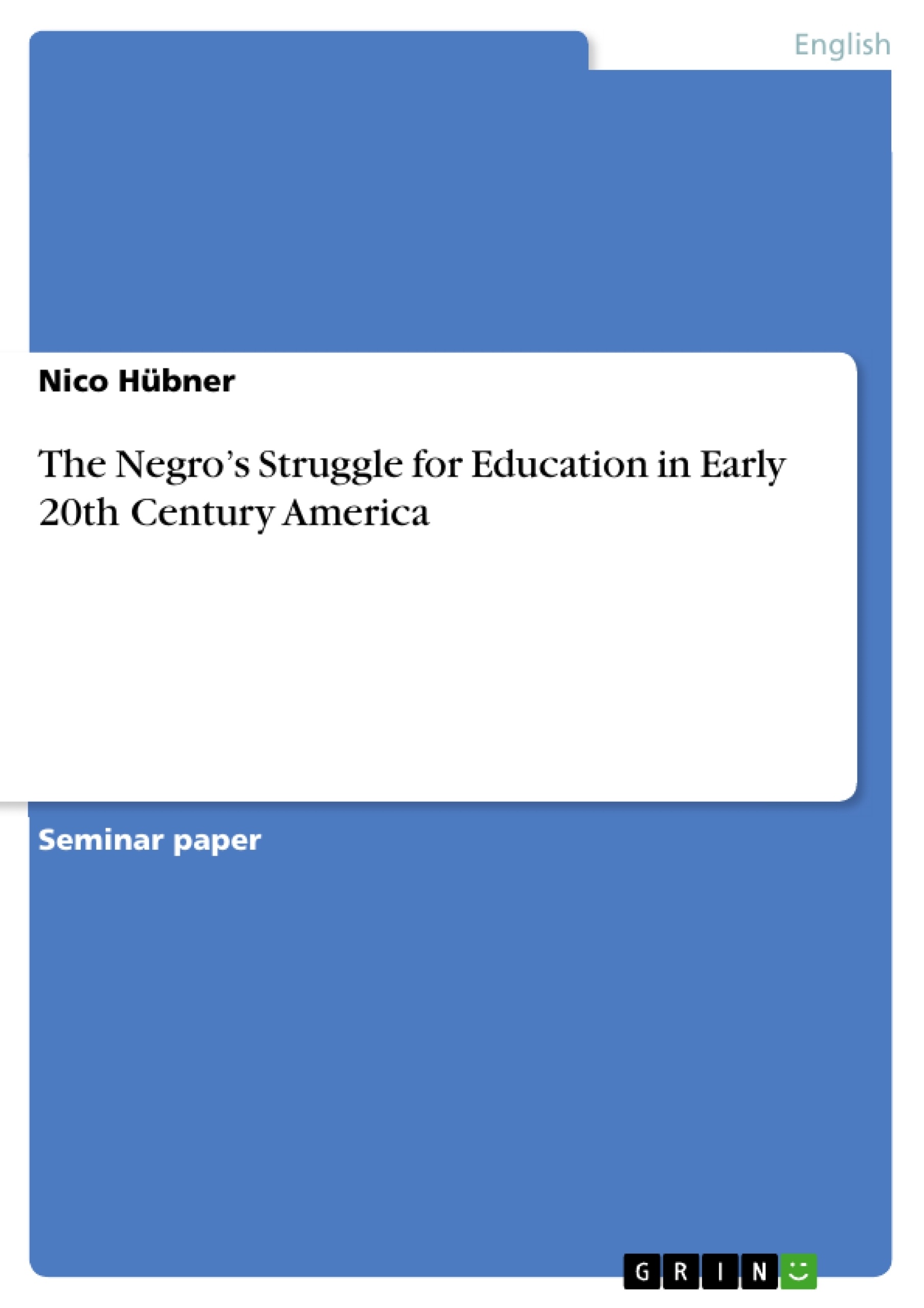Early 20th century America was a place where the African American had little or no say in society. Only 35 years after liberation the Negro was still struggling against race prejudices that amongst other things kept him from enjoying the same education as whites did. This discrimination had its roots in an obsolete worldview Americans had taken over from the late 19th century and according to which the Negro evolution had never passed the stage of savagery.
To counteract this inflammatory discrimination Negro leaders like W.E.B. Du Bois and Booker T. Washington rose and gave proposals about the right program for Negro education. Although they differed considerably in their views, they aimed for the same goal; the advancement of the Negro race. Apparently, white leaders such as Thomas Jesse Jones, justifying their stance with scientific proof, constantly opposed them.
In juxtaposing the different views this work is trying to shed light on the Negro’s struggle for education in early 20th century America. For this purpose a revision of contemporary literature, surveys, statistics and legal documents was of chief importance. The first part thus gives a preliminary account of the progressive debate that took place in the first years of the 20th century. Since whites based their discriminative attitude on evolutionary theory, a short summary of Lewis Henry Morgan’s Ancient Society is given, and it is shown to which extend it influenced contemporary thinking.
The next part compares Thomas Jesse Jones’ recommendations on Negro education, derived from an extensive study he conducted, with W.E.B. Du Bois’ and Booker T. Washington’s views on that matter.
The second part of this work starts out to give legal documentation on segregation in Americas’ schools that lead to extensive changes of the countries demography. At this point, the North with New York as the most progressive state is characterized as well as the more conservative South, where Cumming vs. Richmond Board of Education had a more negative impact on Negro education.
The final part constitutes an overview of the actual achievements that Negroes made in their struggle for education. In that, not only elementary school education is being looked at but also high school and higher education.
Table of Content
1. Introduction
2. Progressive Debate on Negro Education
2.1. Thomas Jesse Jones
2.2. W.E.B. Du Bois
2.3. Booker T. Washington
3. Harlem Renaissance Schooling
3.1. Cumming vs. Richmond County Board of Education
3.2. New York
3.3. The South
3.4. Results
4. Conclusion
5. Bibliography



